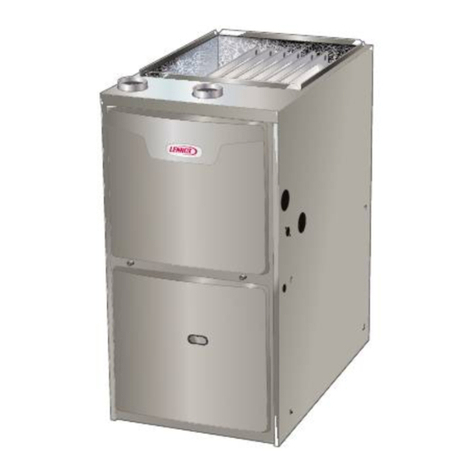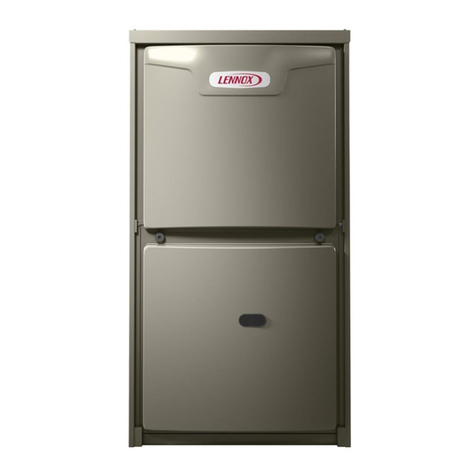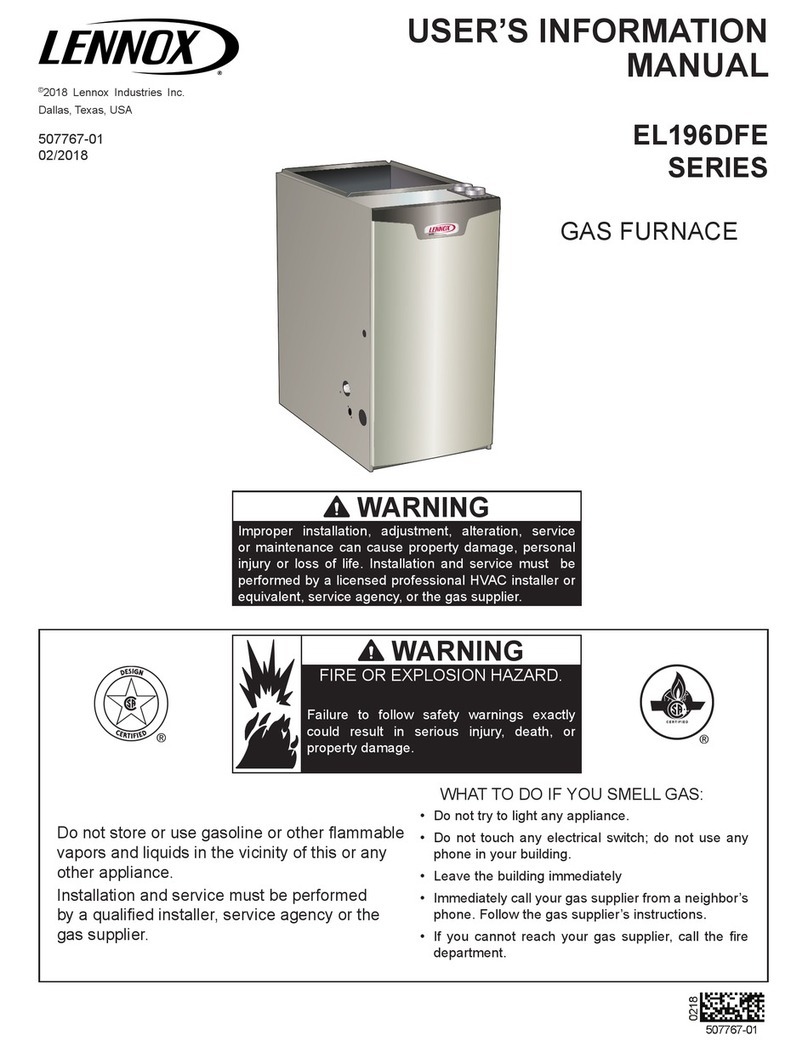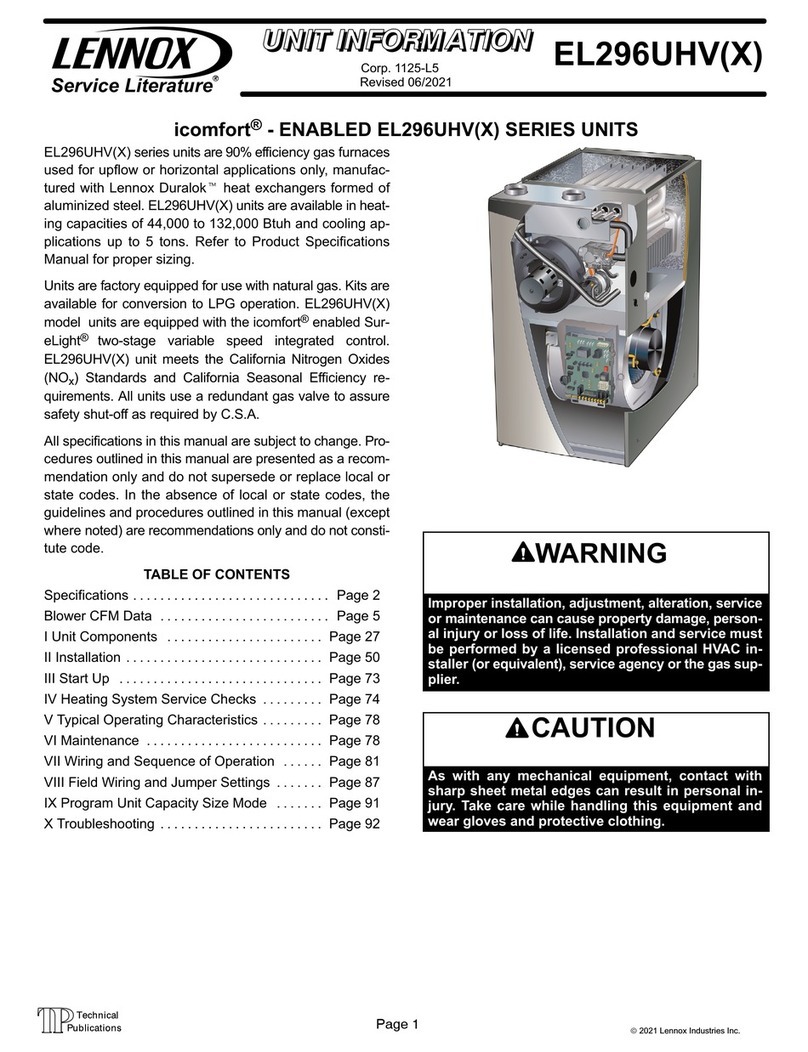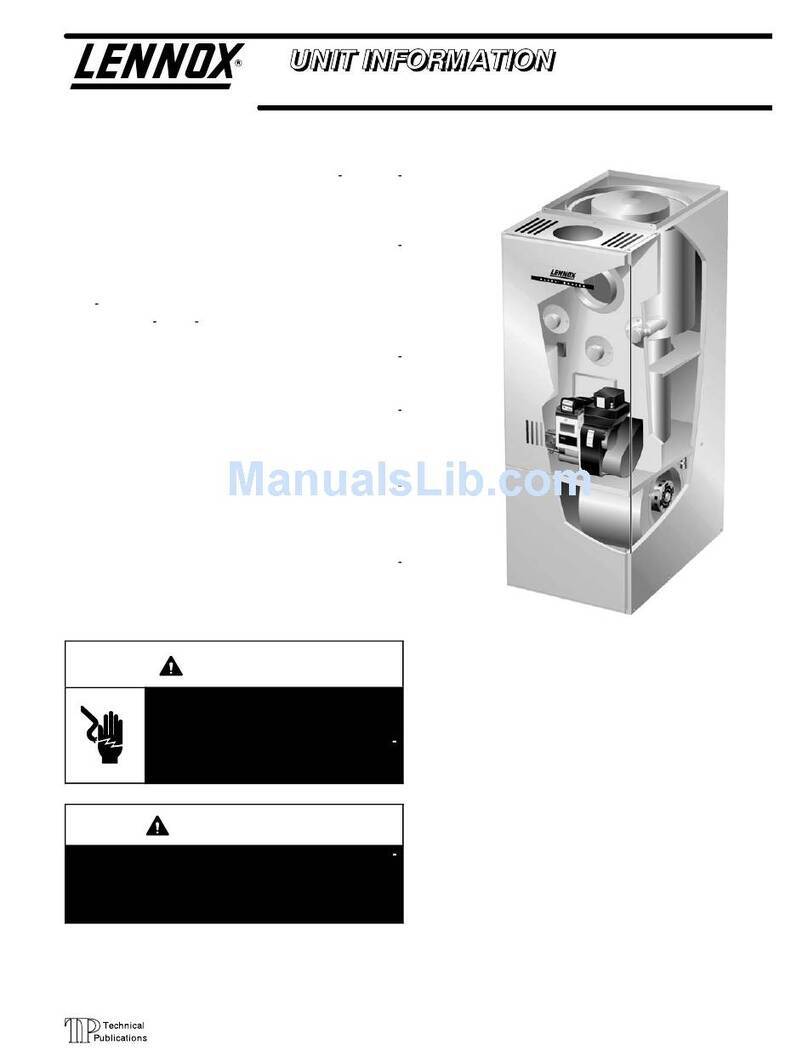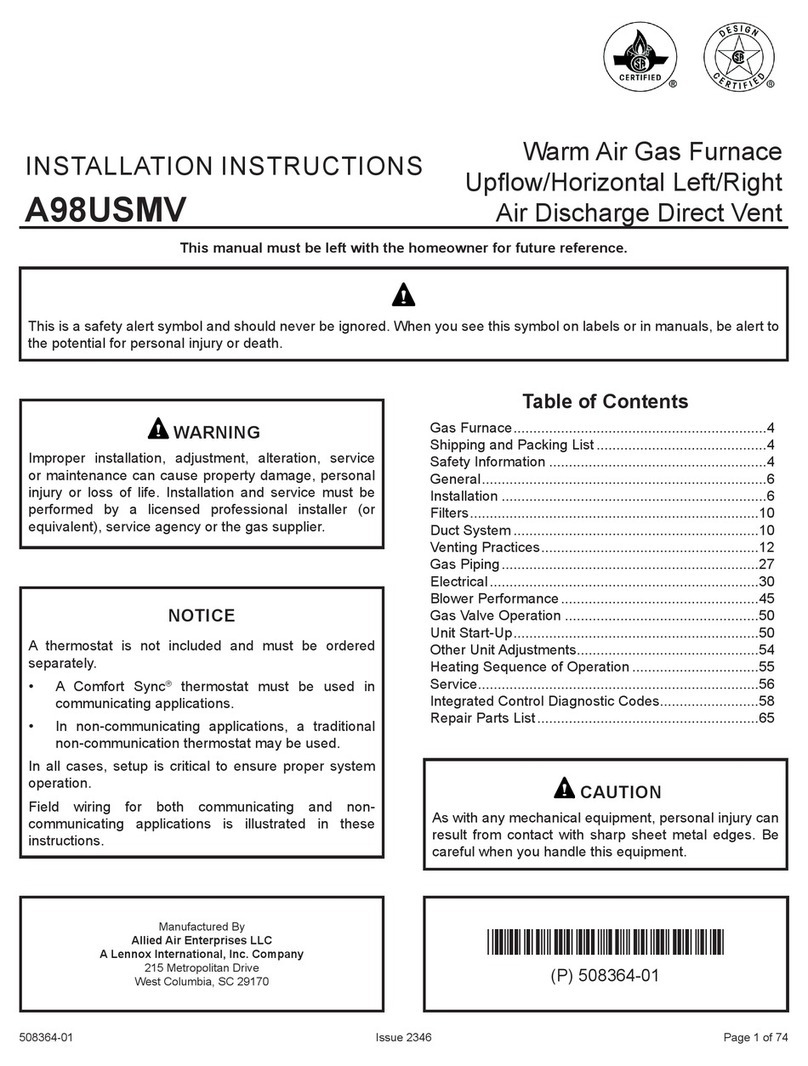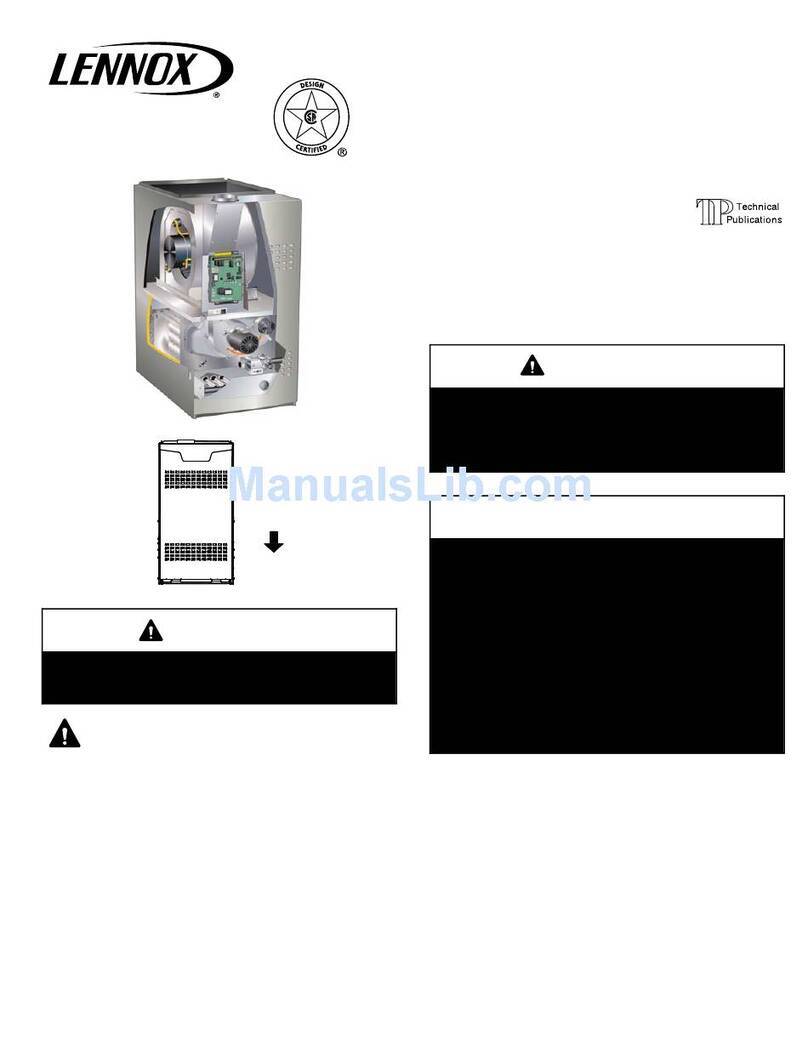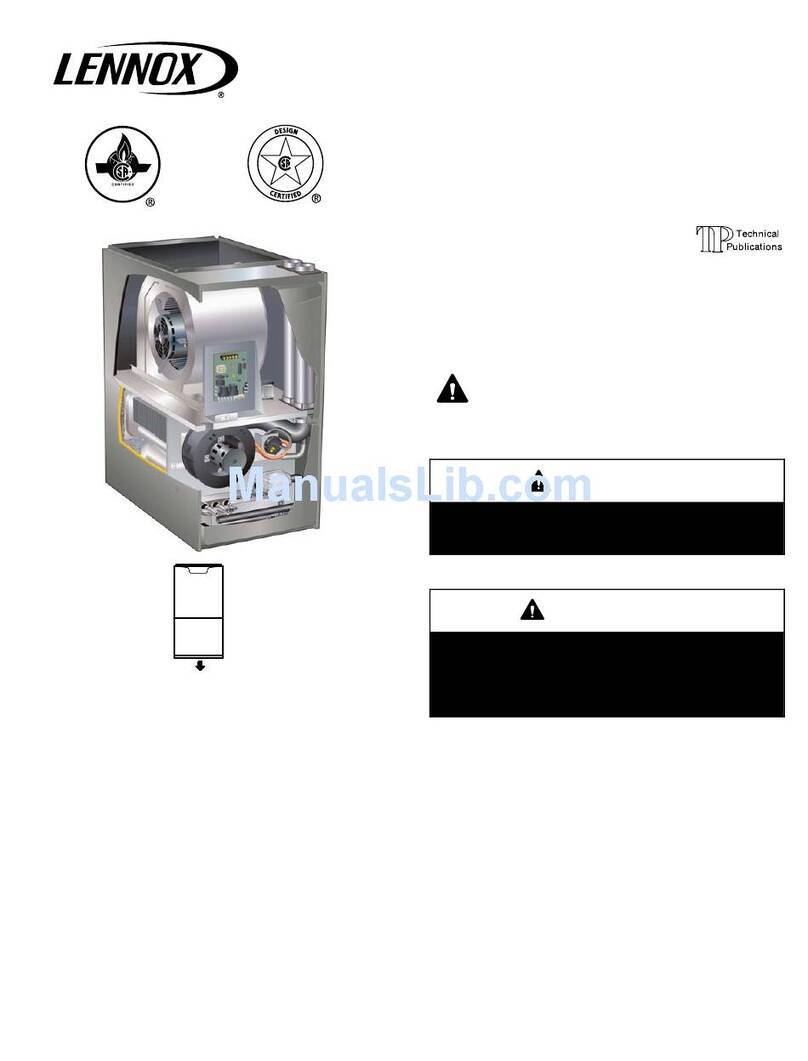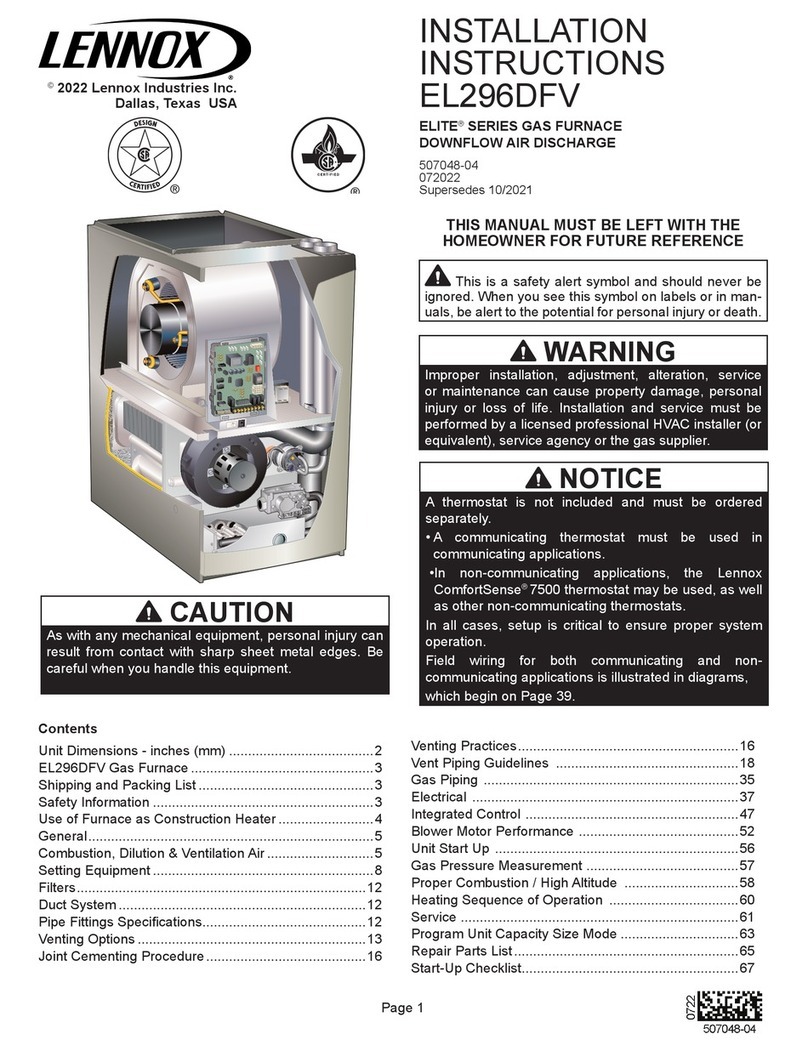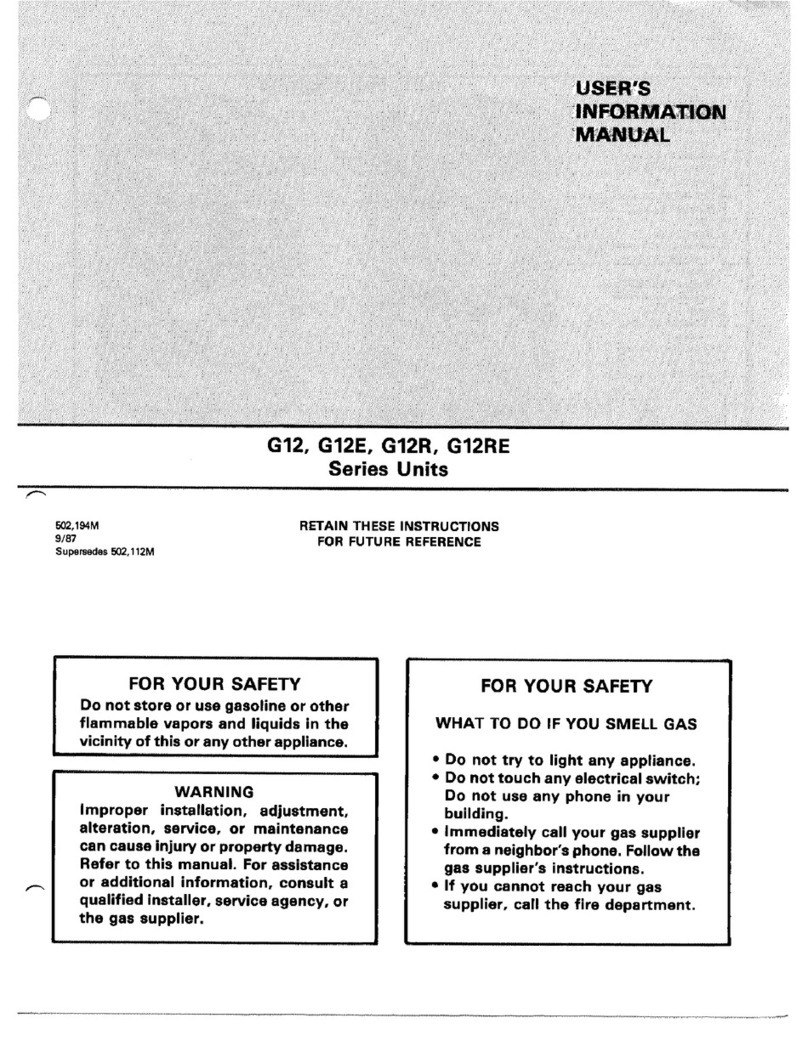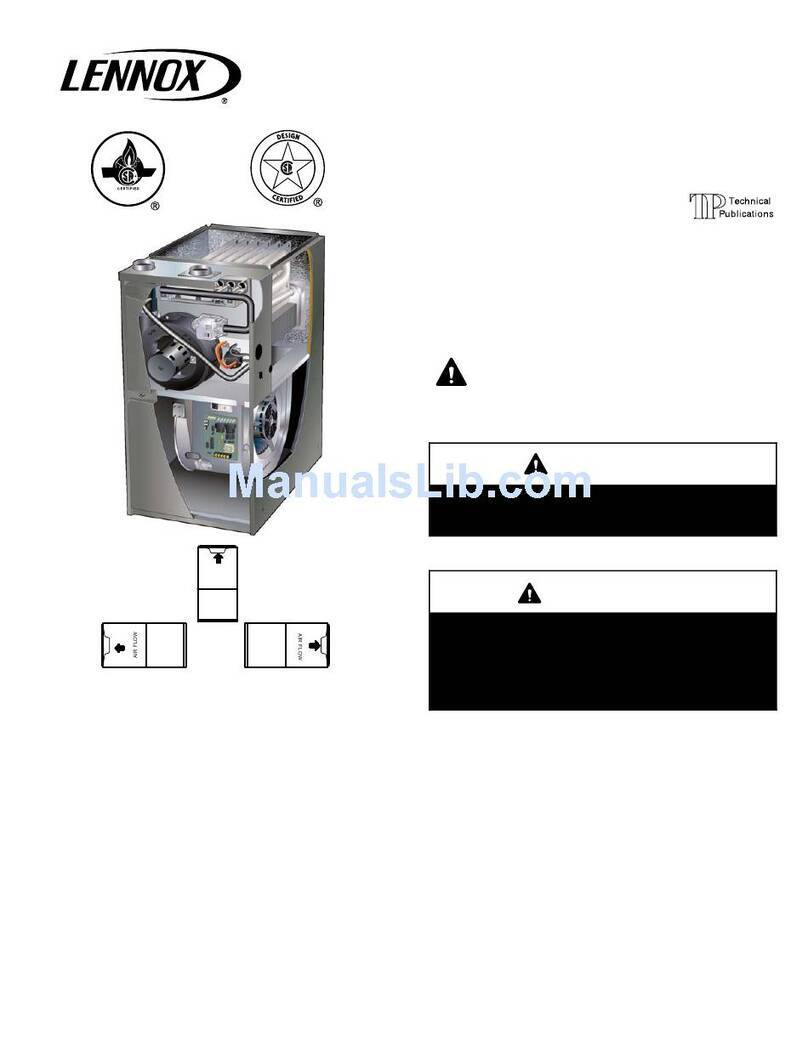
Page 5
garage, hangar, or other building that has a hazardous at
mosphere, the furnace must be installed according to rec
ommended good practice requirements and current Na
tional Fuel Gas Code or CSA B149 standard.
NOTE - NOTE - Furnace must be adjusted to obtain a tem
perature rise (100% percent capacity) within the range(s)
specified on the unit nameplate. Failure to do so may cause
erratic limit operation and may also result in premature
heat exchanger failure.
This SLP98UHV furnace must be installed so that its elec
trical components are protected from water.
Installed in Combination with a Cooling Coil
When this furnace is used with cooling units, it shall be
installed in parallel with, or on the upstream side of, cooling
units to avoid condensation in the heating compartment.
With a parallel flow arrangement, a damper (or other
means to control the flow of air) must adequately prevent
chilled air from entering the furnace. If the damper is manu
ally operated, it must be equipped to prevent operation of
either the heating or the cooling unit, unless it is in the full
HEAT or COOL setting. See figure 3.
FIGURE 3
Gas Unit
Heating Unit Installed Upstream of Cooling Unit
Gas Unit
Dampers
(open during heating operation only)
Dampers
(open during cooling operation only)
Heating Unit Installed Parallel to Air Handler Unit
Air Handler Unit
Cooling Coil
When installed, this furnace must be electrically grounded
according to local codes. In addition, in the United States,
installation must conform with the current National Electric
Code, ANSI/NFPA No. 70. The National Electric Code
(ANSI/NFPA No. 70) is available from the following ad
dress:
National Fire Protection Association
1 Battery March Park
Quincy, MA 02269
NOTE - This furnace is designed for a minimum continuous
return air temperature of 60°F (16°C) or an intermittent op
eration down to 55°F (13°C) dry bulb for cases where a
night setback thermostat is used. Return air temperature
must not exceed 85°F (29°C) dry bulb.
In Canada, all electrical wiring and grounding for the unit
must be installed according to the current regulations of the
Canadian Electrical Code Part I (CSA Standard C22.1)
and/or local codes.
CAUTION
Do not set thermostat below 60°F (16°C) in heating
mode. Setting thermostat below 60°F (16°C) reduces
the number of heating cycles. Damage to the unit
may occur that is not covered by the warranty.
The SLP98UHV furnace may be installed in alcoves, clos
ets, attics, basements, garages, and utility rooms.
This furnace is not designed for installation in mobile
homes, recreational vehicles, or outdoors.
Never use an open flame to test for gas leaks. Check all
connections using a commercially available soap solution
made specifically for leak detection.
Use of Furnace as Construction Heater
Lennox does not recommend the use of SLP98UHV units
as a construction heater during any phase of construction.
Very low return air temperatures, harmful vapors and op
eration of the unit with clogged or misplaced filters will dam
age the unit.
SLP98UHV units may be used for heating of buildings or
structures under construction, if the following conditions
are met:
DThe vent system must be permanently installed per
these installation instructions.
DA room thermostat must control the furnace. The use of
fixed jumpers that will provide continuous heating is not
allowed.
DThe return air duct must be provided and sealed to the
furnace.
DReturn air temperature range between 60°F (16°C) and
80°F (27°C) must be maintained.
DAir filters must be installed in the system and must be
maintained during construction.
DAir filters must be replaced upon construction comple
tion.
DThe input rate and temperature rise must be set per the
furnace rating plate.
DOne hundred percent (100%) outdoor air must be pro
vided for combustion air requirements during construc
tion. Temporary ducting may supply outdoor air to the
furnace. Do not connect duct directly to the furnace.
DThe furnace heat exchanger, components, duct sys
tem, air filters and evaporator coils must be thoroughly
cleaned following final construction clean-up.
DAll furnace operating conditions (including ignition, in
put rate, temperature rise and venting) must be verified
according to these installation instructions.


